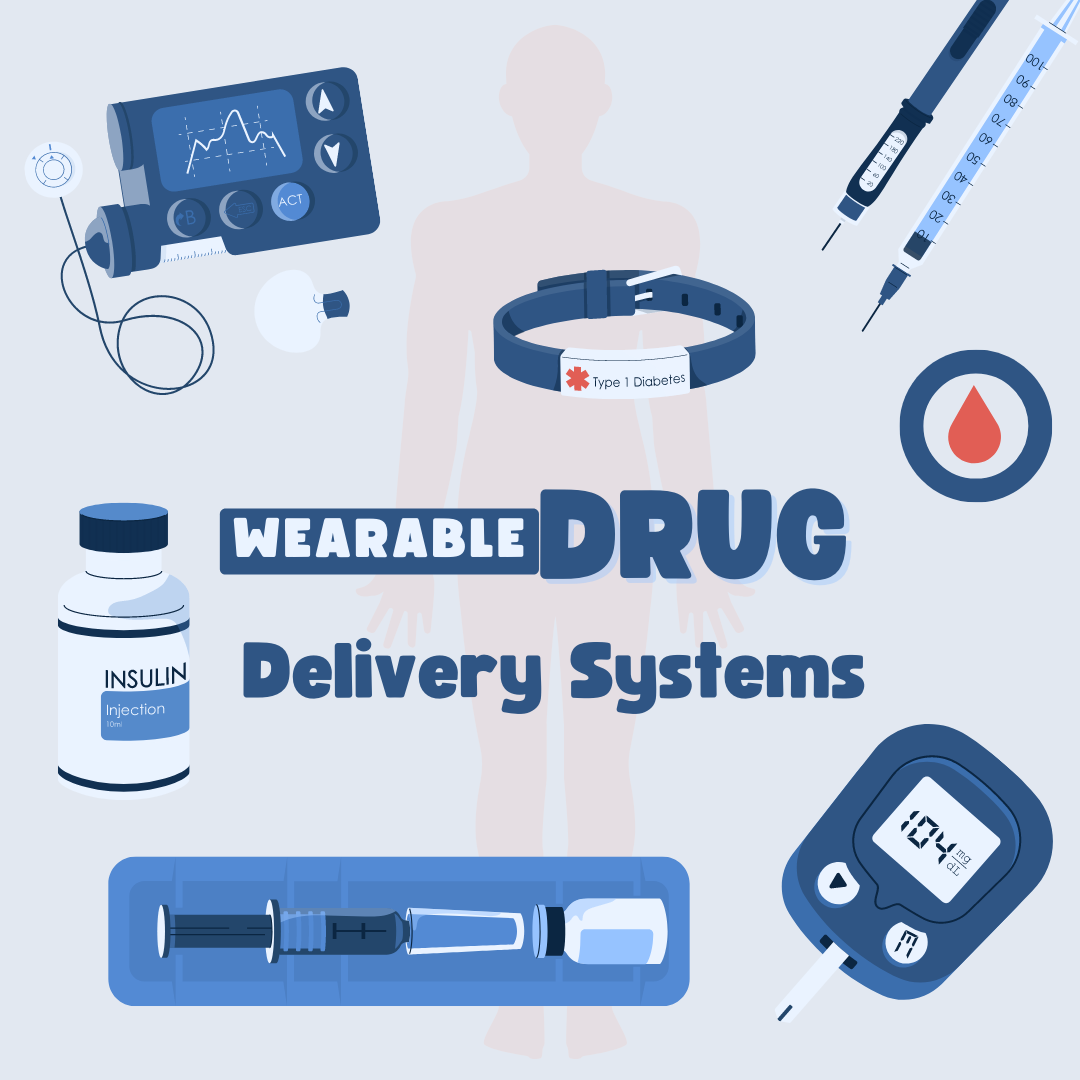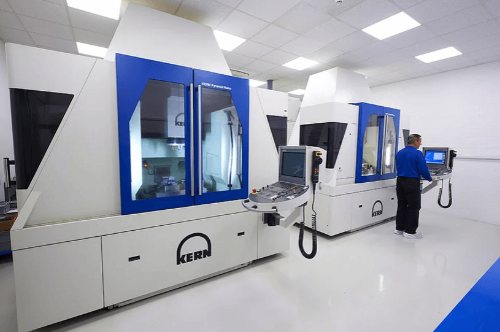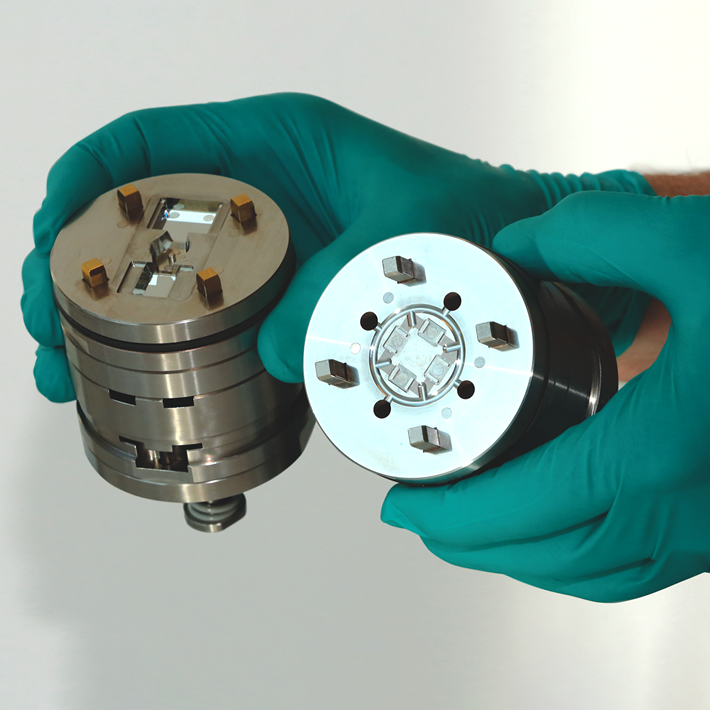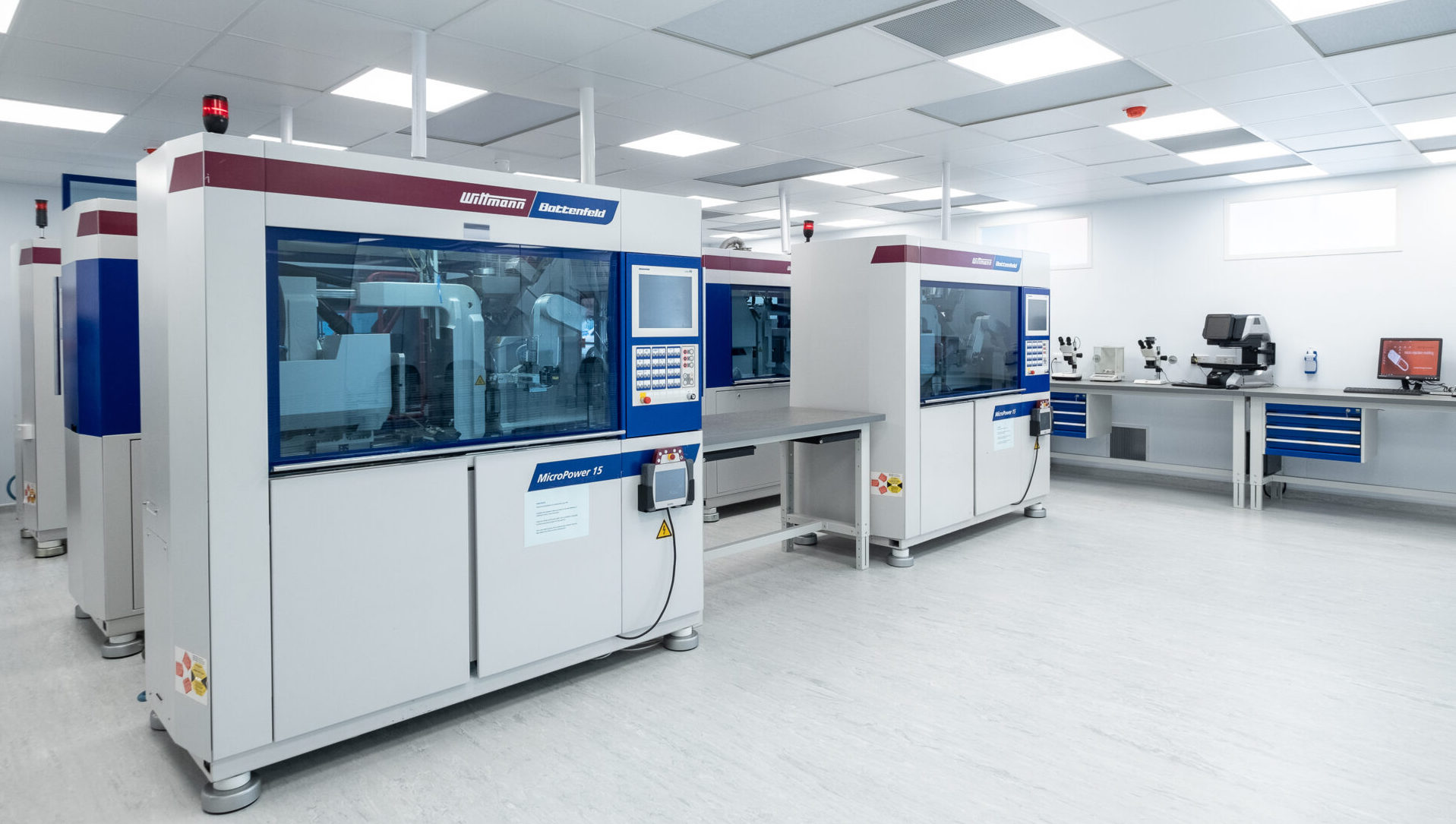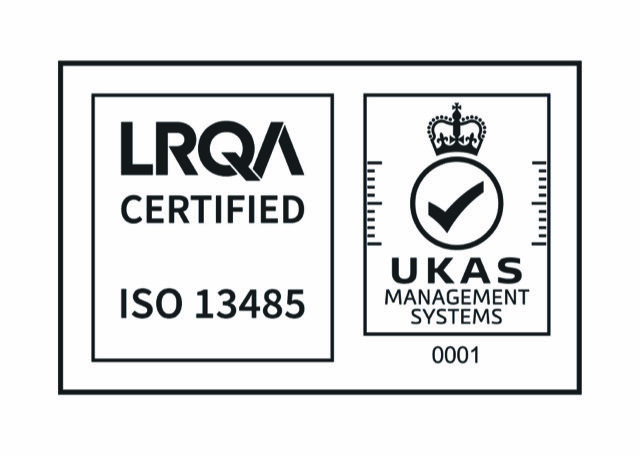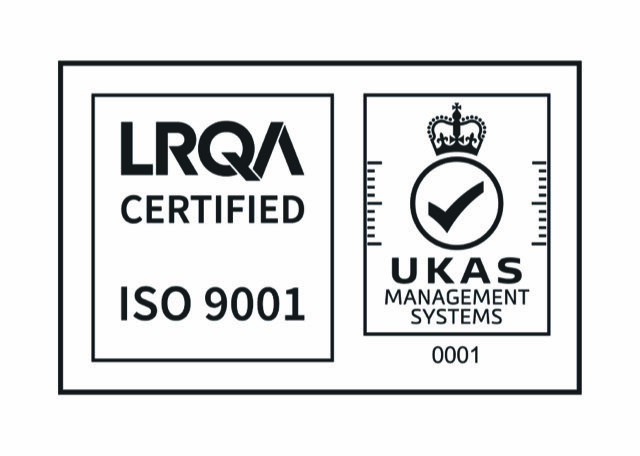The trend towards wearable drug delivery systems
What are Wearable drug delivery systems?
Drug delivery devices are specialised medical equipment designed to administer medication or therapeutic agents along a predefined route, ensuring rapid absorption and precise drug delivery to the central nervous system. As the sector evolves, innovations are emerging to meet growing patient demands for more flexible treatment plans, less painful procedures, minimal errors, and reduced hospital workloads and costs. In a recent report, wearable drug delivery systems are considered to be a game-changing development in the healthcare sector.
Wearable drug delivery systems are attached to the body and automatically administer predetermined dosages. These devices, such as belts, microneedle patches, injectors, and drug-eluting contact lenses, can be linked to smartphones or measurement equipment for convenient, on-demand delivery. They offer enhanced safety, flexibility, and convenience, improving the quality of life for patients, particularly those with chronic conditions like diabetes, cancer, and cardiovascular diseases.
The market for Wearable drug delivery systems
In 2020, the wearables market’s home care end-use category had strong growth, indicating a trend towards self-administration that began even before the covid-19 epidemic. For instance, the majority of patients polled in a 2018 study carried out in Belgian hospitals stated they would like to self-administer medication and that they had a favourable opinion of it (Vanwesemael T et al, 2018).
According to a recent report, the wearable injectors market is projected to grow at a strong CAGR of 12.4%, increasing from USD 6.7 billion in 2022 to USD 20.9 billion by 2032. Key drivers include the rising prevalence of chronic conditions like diabetes, cardiovascular disease, and cancer, alongside the growing use of biologics such as monoclonal antibodies. Additionally, advancements in medtech, increased R&D activities, and higher demand for home-based treatments, particularly for elderly or less mobile patients, are contributing to this growth.
The study by GlobalData estimates that more than 100 businesses, including technology suppliers, well-known healthcare organisations, and burgeoning start-ups, are involved in the creation and use of wearable medicine delivery systems. Some of the key players include Philip Morris International, Bayer, Becton Dickinson and Co, Baxter International, Fresenius and Co, Medtronic, etc.
On a bigger scale, Market.us projects that the wearable medical device market is projected to reach US$165.5 billion by 2032, growing at a CAGR of 19.1% from 2023, up from US$30.1 billion in 2022, driven by increasing consumer focus on health and fitness. Trackers lead by product category, while diagnostic and monitoring devices hold the largest share by device type, with expected growth of 10.6% over the forecast period. Home healthcare remains the dominant application area, supporting the rise of wearable drug delivery systems for enhanced patient convenience.
Key factors in Wearable drug delivery systems
In order to maximise patient comfort, which is primarily the aim of weartable drug delivery systems, it is important to pay great attention to biocompatibility and moisture management.
Prolonged use of body-worn devices may lead to skin irritation, itching, or redness due to adhesive irritants or material leaching from metallic, synthetic, or bio-based components. Such contact can cause allergic reactions, rashes, or bacterial build-up. Sweat may also trigger chemical reactions—such as galvanic corrosion—when in contact with electrical parts, posing risks to both device integrity and patient safety. Mechanical factors like abrasion or sustained pressure can further increase irritation. Therefore, developers must ensure adhesives comply with ISO 10993 standards for cytotoxicity, irritation, and sensitisation, along with relevant local regulations and allergy considerations for the device’s intended use.
In addition to challenges in designing skin-contact and construction-layer adhesives, patient discomfort may also arise from moisture build-up beneath the wearable drug delivery device due to perspiration or fluid exposure. This can lead to premature device removal or adverse events such as skin tears or infection. Most adhesive materials manage moisture either by allowing fluid to pass through micro-perforations for evaporation, through fluid absorption, or a combination of both.
To ensure patient comfort and manufacturability, drug delivery system developers collaborate closely with adhesive material suppliers experienced in wearable medical devices to define optimal design and construction solutions.
Challenges for Wearable drug delivery systems
While being painless, flexible and easy-to-use, the development of wearable drug delivery systems faced some drawbacks that required advanced technology and significant R&D investments to be solved. Some of the major challenges are multiple dosage, non-selective targeting, uncontrolled drug biodistribution, and toxicities.
Extending wear time is a key objective for developers of wearable drug delivery systems, as longer wear periods reduce replacement costs, enhance patient comfort, and support adherence to treatment regimens. While typical wear times range from 3 to 7 days, manufacturers increasingly target 3 to 4 weeks to maximise device effectiveness. Achieving this often involves improving battery life and data storage, enabled by technological advancements from other industries.
Wearable drug delivery devices represent the next step in chronic illness management, meeting growing demands for immediacy, flexibility, and patient convenience. To advance this complex field, developers must further specialise their design and testing processes, collaborating with global manufacturers to enhance innovation and support worldwide commercialisation.
References:
Vanwesemael T et al, “The willingness and attitude of patients towards self-administration of medication in hospital”. Ther Adv Drug Saf, 2018, Vol 9(6), pp 309–321.

Micro Systems specialises in the design, manufacture and validation of ultra precision micro moulds for the medical, pharmaceutical and optical markets, at the same time, the development and use of micro and nano technologies in the design and manufacture of injection moulded components. We have a dedicated micro moulding facility, and have ISO13485 and ISO9001 certifications. For more information, please Contact us or visit our website.

